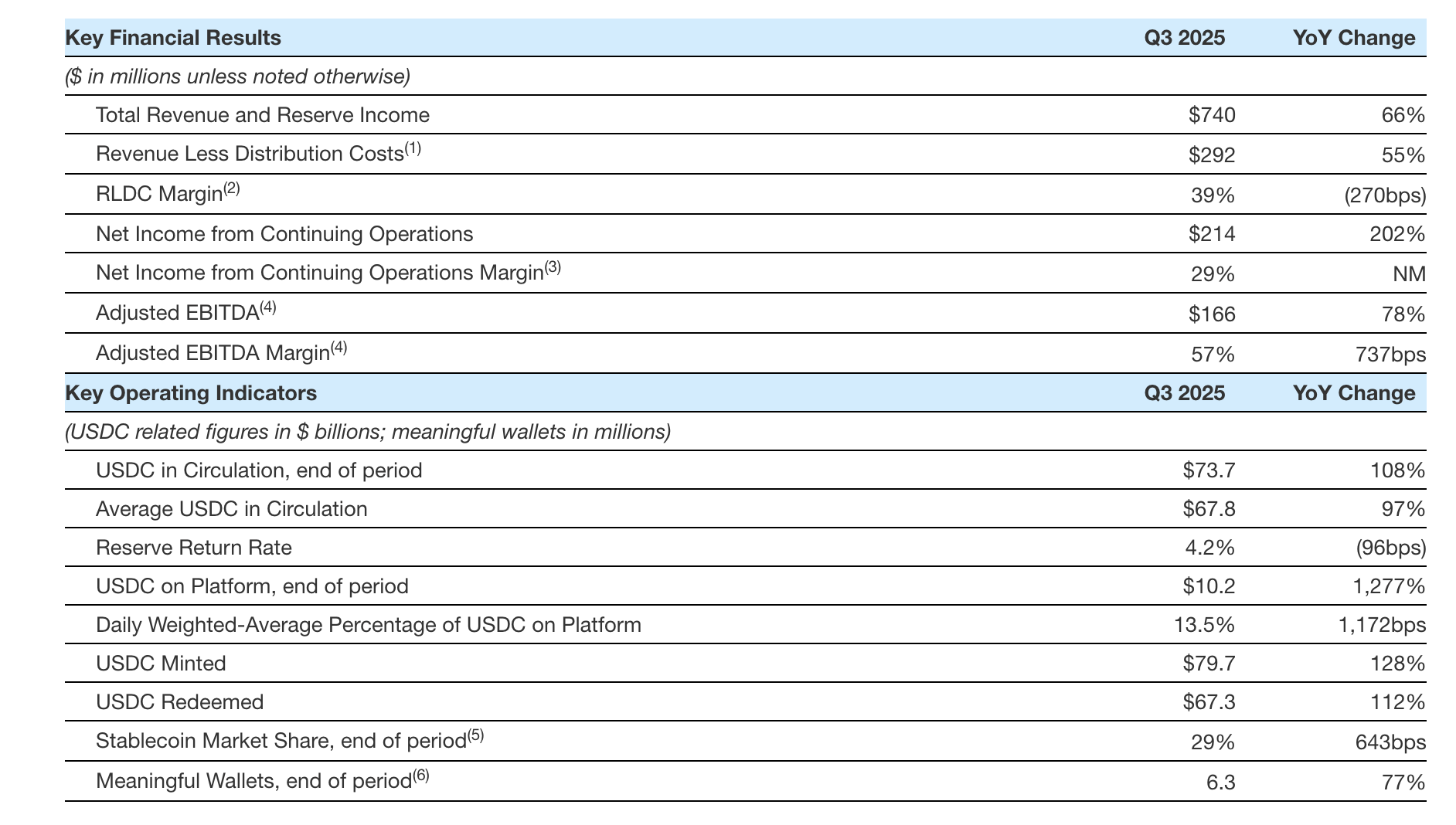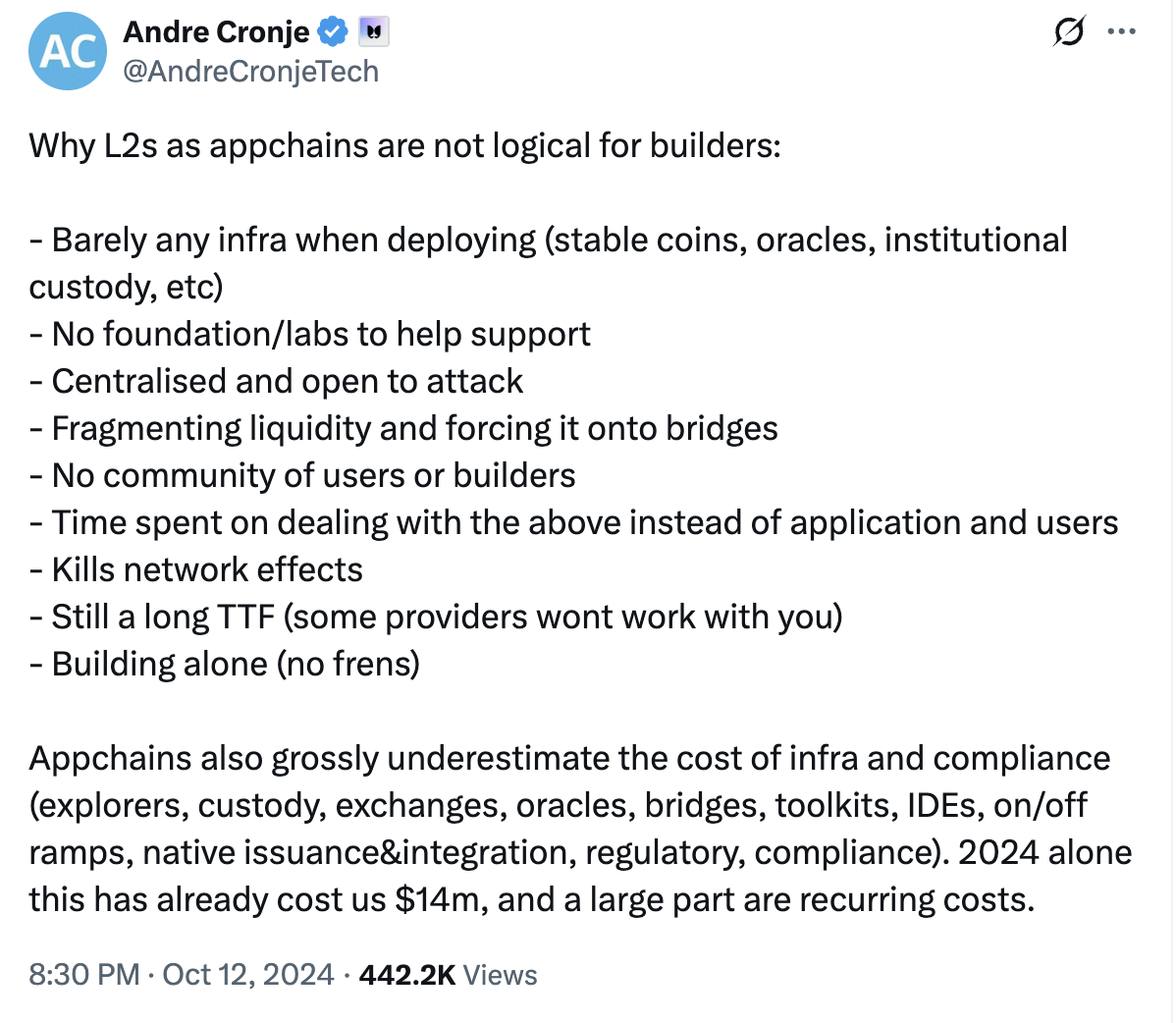Circle, the issuer of USDC stablecoin, is exploring a native token launch on its Arc layer-1 blockchain testnet to boost adoption and shift toward distributed governance, moving away from initial stablecoin-based gas fees.
-
Circle launched the Arc testnet in October 2025 with major participants like Goldman Sachs, BlackRock, and Visa.
-
Initial plans focused on USDC-denominated gas fees for the enterprise-focused Ethereum Virtual Machine network.
-
The company reported Q3 2025 revenue of $740 million, up 66% year-over-year, alongside strong net income growth.
Discover Circle’s Arc native token plans and Q3 financials: stablecoin innovation meets blockchain governance. Explore enterprise adoption and future crypto trends today.
What is Circle Planning for Its Arc Network Native Token?
Circle Arc native token initiatives aim to enhance network participation and long-term growth on the enterprise-focused blockchain. The stablecoin issuer behind USDC is considering a native token for its Arc layer-1 testnet, an Ethereum Virtual Machine-compatible network designed for institutional use. This move supports a transition to decentralized governance with geographically distributed validators, aligning stakeholder interests while initially exploring stablecoin-denominated gas fees.
How Will the Circle Arc Native Token Impact Stablecoin Gas Fees?
Circle’s Arc network, launched in October 2025, initially centered gas fees around USDC and other stablecoins to streamline enterprise transactions on this specialized Ethereum Virtual Machine platform. The testnet attracted over 100 companies, including investment bank Goldman Sachs, asset manager BlackRock, and credit card giant Visa, demonstrating strong institutional interest. According to Circle’s statement, the native token exploration seeks to “foster network participation to drive adoption, further align the interests of Arc stakeholders, and support the long-term growth and success of the Arc network.”
This pivot reflects broader trends in blockchain development, where native tokens incentivize validator distribution and governance decentralization. Experts note that such tokens can reduce reliance on external assets like stablecoins for network operations, potentially lowering volatility in fee structures. For instance, data from similar layer-1 networks shows that native token models have increased user engagement by up to 40% in the first year post-launch, based on on-chain metrics from platforms like Injective.

Source: Jeremy Allaire
While Circle has not detailed the token’s exact utility beyond governance, it could enable staking mechanisms to secure the network against centralized risks. This aligns with Circle’s enterprise focus, where stability and compliance are paramount. As per reports from financial analysts, integrating native tokens in testnets like Arc could accelerate adoption among regulated entities by providing clearer economic models.
Frequently Asked Questions
What Are the Key Financial Highlights from Circle’s Q3 2025 Earnings?
Circle reported $740 million in revenue for Q3 2025, marking a 66% increase from the previous year, driven by stablecoin demand. Net income reached $214 million, up 202%, though distribution costs rose 74% to $448 million. EBITDA grew 78% to $166 million, underscoring operational strength despite a 70% hike in operating expenses to $211 million due to workforce expansion.
Why Is Circle Shifting Arc to Distributed Governance?
Circle is transitioning its Arc network to a decentralized model with geographically distributed validators to enhance security, resilience, and global participation. This approach, as outlined in their earnings disclosure, promotes stakeholder alignment and long-term network success, moving beyond initial stablecoin fee structures for a more robust, community-driven ecosystem that appeals to institutional users worldwide.
Key Takeaways
- Native Token Exploration: Circle’s potential Arc token launch aims to drive adoption and decentralized governance, evolving from USDC-based fees.
- Strong Q3 Performance: Revenue surged 66% to $740 million, with net income doubling, signaling robust stablecoin market growth.
- Institutional Momentum: Partnerships with Goldman Sachs, BlackRock, and Visa highlight Arc’s enterprise appeal; monitor for full mainnet rollout.

Circle reports Q3 financial results. Source: Circle
The introduction of a native token on Circle’s Arc network underscores the evolving landscape of application-specific blockchains, or appchains, which prioritize tailored scalability for enterprise needs. These networks address limitations in general-purpose blockchains, such as Ethereum, by offering faster transaction speeds and lower fees for targeted applications. However, they must navigate challenges like liquidity fragmentation and compliance costs.
Circle’s Arc testnet exemplifies this shift, with its focus on stablecoin integration initially providing a familiar entry point for institutions. The involvement of major players like Goldman Sachs and BlackRock signals growing confidence in blockchain for financial services. As Circle moves toward distributed validators, it could set a precedent for how stablecoin issuers blend centralized stability with decentralized innovation.
Financially, Circle’s Q3 2025 results paint a picture of expansion amid rising costs. The 66% revenue growth to $740 million reflects surging demand for USDC, now a cornerstone for DeFi and cross-border payments. Net income’s 202% jump to $214 million highlights profitability, even as transaction costs climbed 74% due to higher volumes. Operating expenses increased 70% to $211 million, attributed to a 14% workforce growth and elevated compensation—investments in talent to support blockchain initiatives like Arc.
EBITDA’s 78% rise to $166 million further bolsters Circle’s position as a leader in the stablecoin space. These metrics, drawn from Circle’s official disclosures, demonstrate resilience in a volatile crypto market, where stablecoins maintain utility as hedges against broader asset fluctuations.
What Role Do Appchains Play in the Future of Blockchain?
Appchains represent a strategic evolution in blockchain architecture, enabling developers to build networks optimized for specific applications, thereby sidestepping congestion and high costs on shared platforms. Examples include Hyperliquid for decentralized perpetuals trading and Injective for finance-focused DeFi, both leveraging layer-1 designs to achieve superior performance metrics—such as sub-second finality and fees under $0.01 per transaction.

Source: Andre Cronje
Yet, appchains face criticism for potential drawbacks. They can fragment liquidity across ecosystems, complicating interoperability, and may introduce centralization risks if validator sets remain small. Andre Cronje, co-founder of Sonic Labs, emphasized these concerns: “Appchains also grossly underestimate the cost of infrastructure and compliance: explorers, custody, exchanges, oracles, bridges, toolkits, integrated development environments, on/off ramps, native issuance and integration, and regulatory compliance.”
Countering this, Marc Boiron, CEO of Polygon Labs, argues that advancing interoperability protocols will mitigate fragmentation. Polygon’s layer-2 solutions, for instance, have integrated with over 50 chains via zero-knowledge proofs, facilitating seamless asset transfers. As blockchain matures, hybrid models combining appchain efficiency with cross-chain bridges could dominate, benefiting projects like Circle’s Arc by enabling fluid stablecoin flows.
In the context of stablecoins, appchains like Arc position USDC for deeper enterprise penetration. Related developments include experiments with won-backed stablecoins on Arc from South Korean innovators, expanding its global footprint. Circle’s strategy aligns with regulatory trends, where compliant blockchains attract traditional finance—evidenced by Visa’s testing of USDC settlements on similar networks.
Overall, Circle’s Arc native token plans and financial prowess signal a maturing crypto sector. By prioritizing governance decentralization, the company addresses key pain points in blockchain adoption. As institutions increasingly engage, expect appchains to proliferate, fostering innovation while demanding robust security and compliance frameworks.
Conclusion
Circle’s exploration of a native token for the Circle Arc network marks a pivotal step toward decentralized governance, complementing its stablecoin strengths and Q3 2025 financial gains. With revenue at $740 million and institutional backing from firms like BlackRock, Arc positions itself as a leader in enterprise blockchain. Looking ahead, this initiative could accelerate stablecoin integration across global finance—stay tuned for mainnet developments and their impact on the broader crypto ecosystem.







